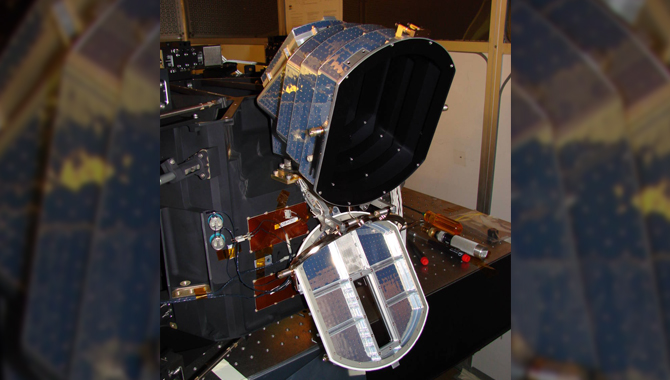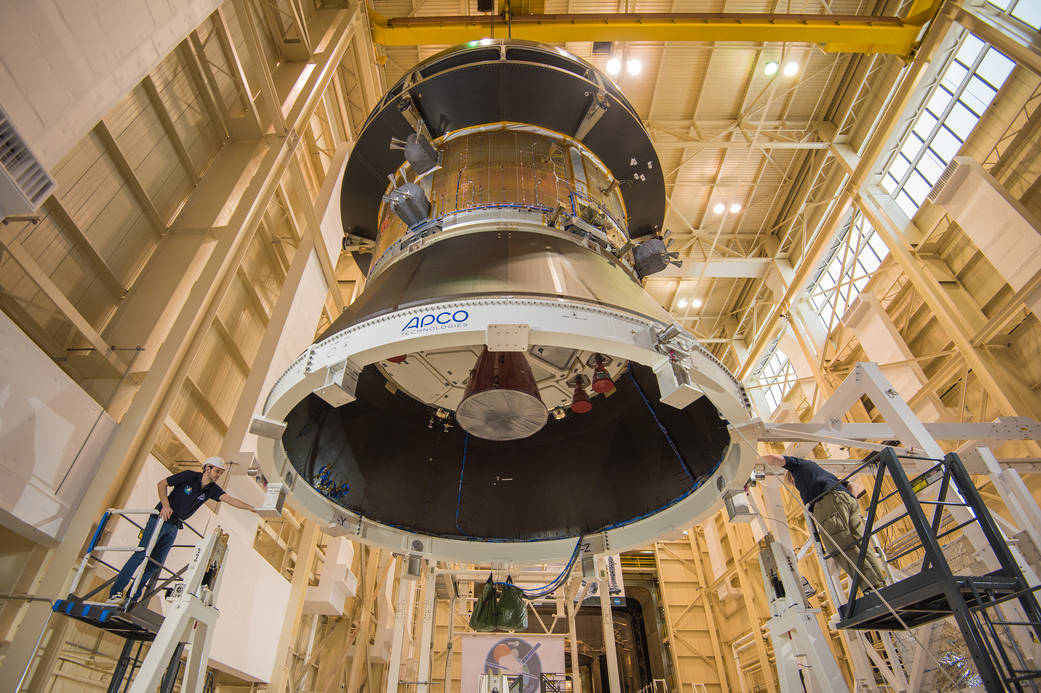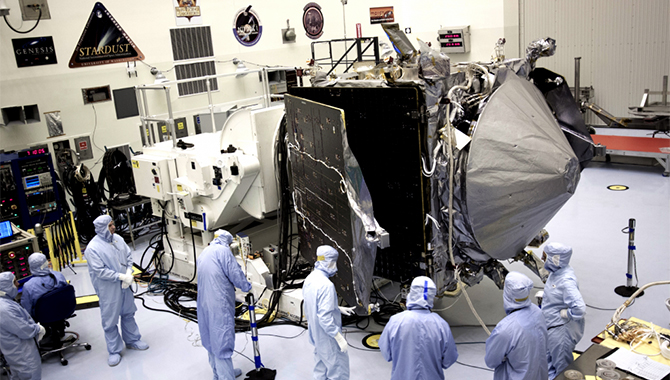
The Far Ultra Violet Imaging Spectrograph (FUV) will fly on the ICON mission, one of NASA’s major projects reviewed by the GAO. In the image, the FUV door release mechanism is being tested at Lockheed Martin.
Photo Credit: NASA/UC Berkeley/ICON
NASA continues to improve cost and schedule performance among large-scale projects, according to a recent Government Accountability Office (GAO) assessment.
The GAO’s eight annual review of NASA’s planning and execution of its major acquisition projects assessed cost and schedule performance, technology maturity, and design stability, as well as steps taken by the agency to mitigate acquisitions risk. Overall, the GAO determined that NASA has continued the trend toward positive improvements seen in recent years.
The report, which covers the period between April 2015 and March 2016, examined 18 projects with life-cycle costs over $250 million: 5 in the formulation stage and 13 in the implementation stage. The projects ranged from Earth-observing satellites to spacecraft designed to advance the agency’s human spaceflight capabilities beyond low Earth orbit (LEO). Four projects were assessed for the first time: the Asteroid Redirect Mission (ARM), which will retrieve a sample from an asteroid as part of the “proving grounds” phase of the agency’s Journey to Mars; Europa, a multiple flyby mission to explore the icy moon of Jupiter and determine whether it holds the potential for life beyond Earth; Exploration Ground Systems (EGS), which will support the Orion Multi-Purpose Crew Vehicle (Orion) and Space Launch System (SLS); and the Ionospheric Connection Explorer (ICON), a satellite designed to investigate the boundary between Earth and space.
Major projects in the formulation stage were ARM, Europa, Mars 2020, NASA Indian Space Research Organization Synthetic Aperture Radar (NISAR), and Surface Water and Ocean Topography (SWOT). In the implementation stage, the projects assessed were the EGS, Gravity Recovery and Climate Experiment Follow On (GRACE-FO), Ice, Cloud, and Land Elevation Satellite-2 (ICESat-2), Interior Exploration using Seismic Investigations, Geodesy, and Heat Transport (InSight), ICON, James Webb Space Telescope (JWST), Origins-Spectral Interpretation-Resource Identification-Security-Regolith Explorer (OSIRIS-REx), Orion, Solar Probe Plus (SPP), SLS, Space Network Ground Segment Sustainment (SGSS), Transiting Exoplanet Survey Satellite (TESS), and the Commercial Crew Program (CCP). The CCP was also reviewed in 2014, but was not part of the 2015 assessment due to a bid protest following the announcement of private-industry commercial crew partners.
According to the report, cost and schedule growth for NASA’s major projects is at or near the lowest level in nine years: 1.3%. Over the past five years, cost and schedule growth has decreased and most major projects remain on track with baselines. However, during eight of the past nine years, at least one major project has exceeded development cost baselines by 30%, requiring it to be rebaselined. This typically occurs as a project prepares for system assembly, integration, and test. In the coming year, nine major projects will be in that phase, including Orion and SLS. Both of these human exploration projects face potential challenges: SLS has consumed a major portion of its schedule reserve due to delays in developing the core stage, while Orion has had to redesign its heat shield.
In accordance with GAO best practices, 9 of 11 major projects now in the implementation phase had matured technologies to technology readiness level (TRL) 6 before the preliminary design review (PDR). In addition, an increasing number of the major projects incorporate existing technologies, which reduces risk. The agency also continued to improve design stability and minimize design changes after the critical design review (CDR). The GAO encouraged the agency to release 90% of engineering drawings before the CDR.
Finally, the GAO looked at steps NASA is taking to implement tools that may lower acquisition risk. NASA continued to use improved project management tools, although the GAO reported that the agency’s efforts in terms of cost estimating and earned value management (EVM) were not consistently in line with GAO best practices. For example, joint confidence levels (JCLs) should be updated on a regular basis. The GAO also commented on the agency’s plan to decentralize independent program assessment by turning over the function to the mission directorates, and cautioned that doing so may impact project oversight. NASA stated that their strategy moving forward is designed to address risk and improve capabilities.
NASA examined the report and agreed with its findings.
Read an APPEL News article about last year’s GAO assessment of NASA’s major projects portfolio.
Watch a NASA Virtual Project Management (PM) Challenge interview about the kinds of reviews that the GAO does for NASA, including the major projects assessment.
Watch an interview from a NASA Virtual PM Challenge about GAO best practices for developing reliable project schedules.









